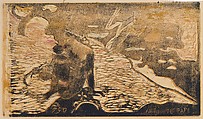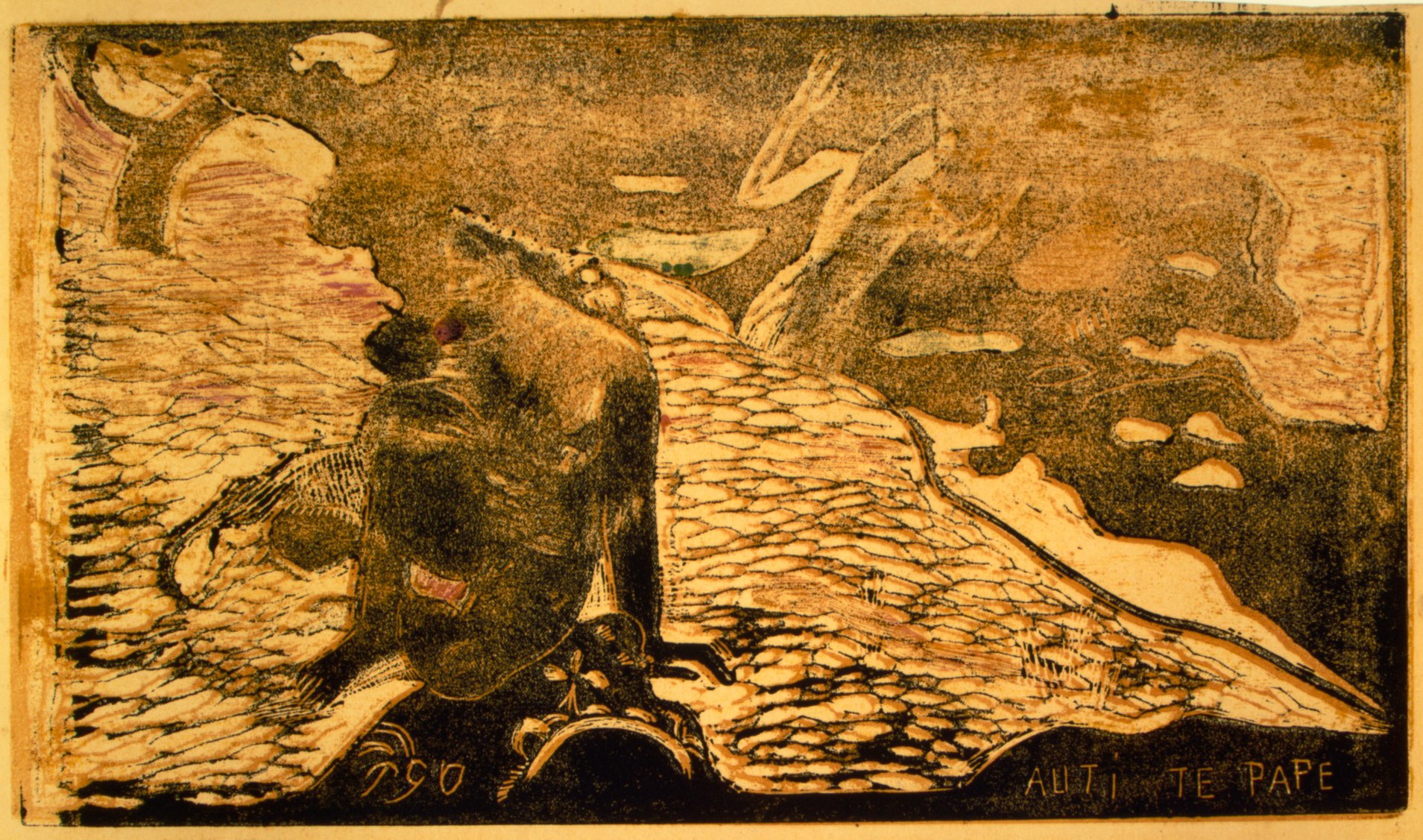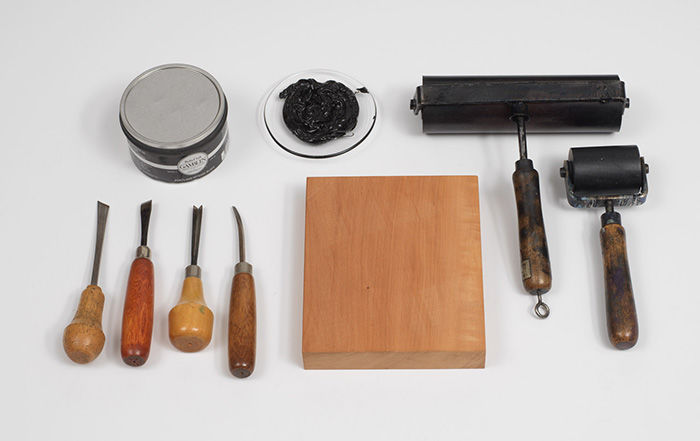Auti Te Pape
Paul Gauguin French
Not on view
Gauguin began working on the text and illustrations for Noa Noa (Fragrant Scent) while in Paris in 1893-94 following his first voyage to Tahiti. The project was originally conceived as a narrative of Gauguin's personal and artistic perceptions of Tahiti but ultimately became something much more complex and mysterious, full of references to Tahitian creation myths and ancient Maori culture. Gauguin designed ten woodblock prints for Noa Noa, which function less as illustrations than as inspired corollaries: they bear little relationship to his romanticized autobiographical text, nor do they seem to follow any particular sequence. However, the imagery and themes of the prints - love and fear, creation and death, day and night - are in keeping with much of Gauguin's Tahitian oeuvre.
This print shows a female nude seated on a riverbank; a second woman with raised arms prepares to plunge into the river in the background. Images of beautiful young women bathing or lounging beside bodies of water reappear throughout Gauguin's Tahitian oeuvre. While this image was not meant as a literal illustration of the text of Noa Noa, it resonates with a section of the first chapter which describes women bathing their legs in the Fatana River.
Due to rights restrictions, this image cannot be enlarged, viewed at full screen, or downloaded.
This artwork is meant to be viewed from right to left. Scroll left to view more.




